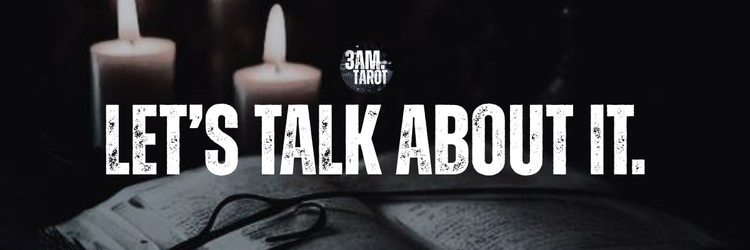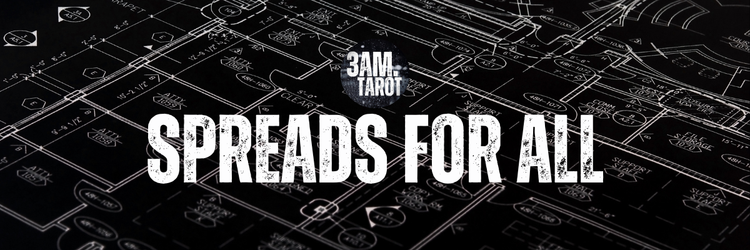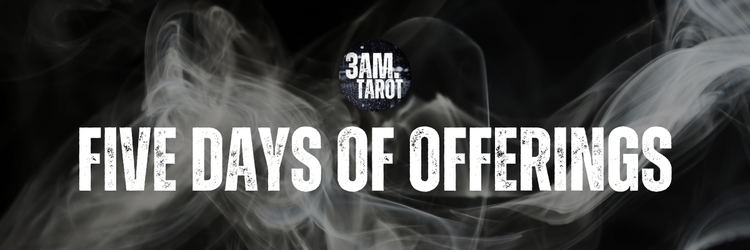patron q's: reading tarot spreads
this post was originally shared with patreon subscribers in june 2022.
hello again, friends! as part of this series focusing on patron-submitted questions, i wanted to answer a particular question about how to read cards in tandem as part of a spread.
//
spreads can be really useful tools for focusing our intentions, understanding what we are asking from the cards, and having a conversation with our deck. with clearly identified positions for every card, we immediately establish a framework for what each card is contributing, and can look at them individually but also as a whole to understand what the tarot wants to communicate.
(i do think it's important to emphasize that if you don't want to use spreads, for any reason, you don't have to! most of my regular daily or weekly pulls don't utilize spreads, but rather are just me talking to my deck, pulling a few cards, and seeing what comes forward. i tend to use spreads when i've been wrestling with a specific issue, or when a card keeps popping up, but that's just my preference - some people use spreads every single time they read, and that's absolutely fine too. there's no "right way" to be a tarot reader, and your use of spreads is completely optional.)
first, let's break down what a spread actually is. a tarot spread is a multi-card layout with defined questions, prompts, or concepts for each card. sometimes they are written around a particular time, like moon phases or zodiacal seasons, while other times they are used to create definition for a question or challenge. there are literally millions of spreads out there, and i've written hundreds myself, so no matter what you're looking for you can likely find a spread that already exists for your question. however, i tend to get the best results with shorter spreads, especially ones that are more general like stop / start / continue, situation / obstacle / advice, or past / present / future.
part of the reason that i like smaller or shorter spreads so much is that there's less room for error. with a well written three-card spread, each position is clearly defined, with a very specific purpose. but the more cards that are introduced, the more positions can get murky, and the easier it can be to get lost in the sauce of the reading, or to feel like cards are contradicting each other. if you're finding that pulling cards with a large spread is bringing up more questions than answers, my best suggestion is to try a two or three card spread, and to see how it feels for you.
to use a spread, first make sure that the one you've chosen actually addresses what you want to know. IMO tarot is not typically the best tool for yes or no style questions (check out lenormand cards, pendulums, or other magical tools), but rather is great for interrogating the self, examining options, or gaining clarity around something murky. if you want to know how to strengthen your relationship, for example, a general love spread might not end up giving you answers that feel useful or relevant, so take your time finding a spread that will make space for your question - or write your own. hold your question firmly in your mind, follow your preferring shuffling and selection method, and pull one card for each position.
once you've pulled your cards, you have a few different options for how to proceed. i like to look at each individual card and consider how it answers the question or prompt in its position, and then look at the broader view of all of the cards together, identifying any themes, repeating numbers or suits, and considering the story that they tell as a group. but i know other readers that look at the broad group first, taking time to sit with any energy or intuitive insights that may emerge before digging into individual cards. there's no wrong way to do this! either method works well, and i would encourage you to try both ways and see which one feels more comfortable for you.
i think the biggest struggle many people have with using spreads is this: what happens when a card doesn't seem to work with the position it was pulled for? how do we read a card when it seems to not make sense? and my answer is that those are often the most revealing, interesting, and important pulls in your spread. if a card isn't clicking for you in a position, spend some extra time with it - either during the initial reading, or later on in reflection. (i sometimes leave spreads out for a day or two, but if you don't have the space or privacy for that, you can always take a photo of your cards.)
to give you an example: in my own readings, since i got my very first tarot deck, i consistently pull cards that are considered "negative" or "scary" in positions of personal power, skill, or magic. i would ask the tarot what i had to offer the world, to give me a card that reflected something valuable that i possessed, and would get cards like the three of swords, the ten of swords, or death. not usually the empowering, sexy answer i was looking for - but this forced me to look at these cards in new ways, to see the possibility and potential within them instead of just shuddering and calling my therapist. challenging as this pattern has been, it also invites me to consider all the layers of meaning within these cards, to learn to see them through different lenses, and to broaden my interpretations for the tarot.
this isn't to say that if you get a card or an answer that you don't like, you should simply research meanings until you find one that you prefer! but it is to say that if something literally doesn't make sense to you, it may be an opportunity to work with that card more closely, to see what the tarot is trying to communicate.
do you use tarot spreads? when do they help you, and when do they make things confusing or unclear?






Member discussion